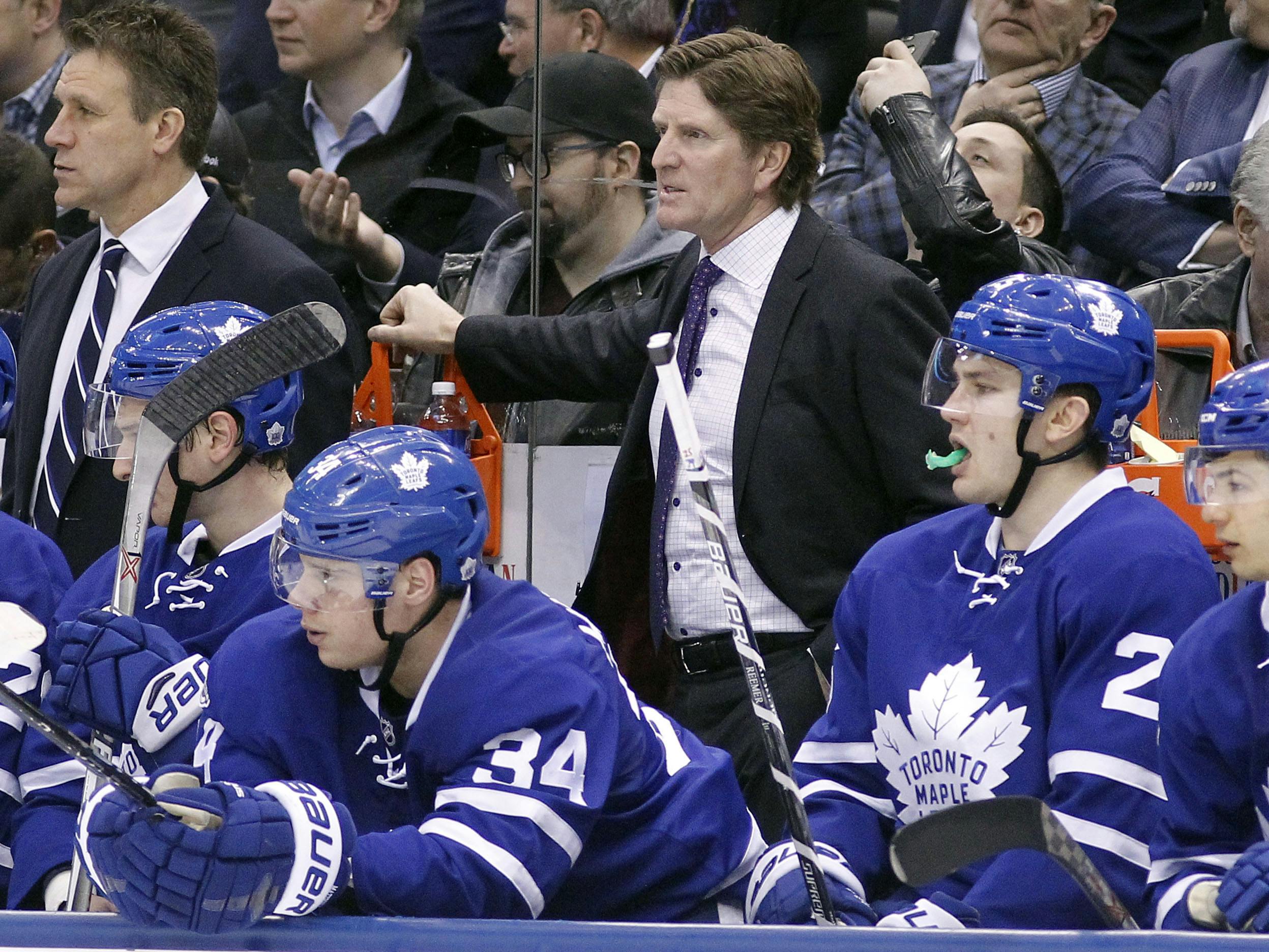Assembling the optimal Maple Leafs lineup using playing styles

Ryan Stimson, creator of “The Passing Project,” recently released a very interesting piece which aims to identify playing styles and which playing styles should theoretically drive goal differentials best when combined.
Stimson used k-means clustering (read more about k-means here) to group players together with players who had similar offensive playing styles. This is how the algorithm grouped forwards (all data is 5v5 and from the 2015-16 season):

via Ryan Stimson – Identifying Playing Styles with Clustering https://hockey-graphs.com/2017/04/04/identifying-player-types-with-clustering/
This points to “playmakers” being by far the most influential on expected goal differential, “shooters” being the second best, “balanced” players being the third and “dependent” players being, as a general rule, bad.
Stimson also binned defencemen into four categories: all around, volume shooters, puck movers and defensive-oriented.

via Ryan Stimson – Identifying Playing Styles with Clustering
The algorithm only classified eleven defenders as “all around,” while 41 were placed in the “volume shooter” category, 64 as “puck-movers” and 85 as “defensive-oriented.” The 11 “all around” defencemen are the best of the best in terms of driving xG%, “volume shooters” are next, followed by “puck-movers” and then “defensive oriented.” Keep in mind, the data used in Stimson’s piece is from last season, due to having more available data than we have so far this year.
My goal for this piece is to identify, using Stimson’s data, what the Leafs’ optimal lineup would be using their current regulars. Dom Luszczyszyn (@domluszczyszyn) took the data and applied it to the Leafs’ current depth chart:

A few things stood out to me at first glance. First, unsurprisingly, the Leafs don’t have any defenders in the “all around” category. The next thing I noticed is that the Leafs only had two players fall into the category of “play-maker,” those two being William Nylander and Nazem Kadri. I would’ve guessed that Kadri would fall under the “shooter” category and I think most people would’ve guessed that Mitch Marner would’ve fallen under “play-maker.”
In order to create the optimal lineup, we need to identify which playing styles play best together. I’m also going to attempt to spread the talent throughout the lineup to create a more “balanced” lineup, which is what Dawson Sprigings (@DTMAboutHeart) found to be the most effective way to construct a lineup.
Stimson included this useful chart to help us identify which playing styles work best with each other:

via Ryan Stimson – Identifying Playing Styles with Clustering
It would be nice if the Leafs had more than two play-makers to construct the lineup around, but they don’t, so Nylander and Kadri have to be on different lines, which they currently are. The best line you could assemble without two play-makers on it has one play maker and two shooters. The Leafs have four shooters in the lineup, so you probably want to spread them out a bit better. The next one down from that, with a 55% xG, is balanced-playmaker-shooter. There is only one Leaf forward who falls under the “balanced” category and that is Tyler Bozak, so he’s our centre. Since Nylander is the only current winger classified as a play-maker, he’s our right winger. That leaves us needing a left winger who is classified under “shooter.” James van Riemsdyk is the only Leaf who fits the bill, so slot in him there. So all we’ve done is swap Marner off that line for Nylander.
The other three left wingers (Hyman, Komarov and Martin) are listed as “dependent” which isn’t great. I’m going to construct the next line around Kadri, the other play-maker. I guess you have to go with dependent-playmaker-shooter for this one (50.3% xG) so how about Komarov-Kadri-Marner. Again, we’ve just taken one winger off the regular line (Brown) and replaced him with another (Marner.)
This leaves us with two shooters (Matthews and Soshnikov) and four dependent players (Hyman, Brown, Boyle and Martin) to round out the bottom six. There isn’t enough data on Kasperi Kapanen or Josh Leivo to include them as possibilities, which I would have liked to do, so keep that in mind. So, do you run a fourth line of three dependent players and a third line consisting of two shooters one dependent player? Or do you put a shooter on each line?
Three dependent players is the worst line combination possible, obviously, running an average xGF% of 41.8%, but adding one shooter to two dependent players doesn’t help too much either, bumping the xGF% up to 44.7%. If you put the two shooters together with one dependent player, that xGF% sky rockets to 52.1%, so I guess I’m going with Hyman-Matthews-Soshnikov as the third line (Matthews can’t even escape Hyman in a hypothetical exercise) and Martin-Boyle-Brown as the fourth line. Just don’t play the fourth line more than five minutes a night, I guess? Here is my sad attempt to make a colour co-ordinated chart like Dom’s:

Well, the top nine looks good. Hypothetically, if you were to play these four lines equally (you wouldn’t), you end up with a 49.8 xG%. Playing the bottom line a minimal amount would help get that over 50%, but my goodness what a black hole that is.
Let’s look at the defence now, which probably won’t be quite as great, but may be a little more fun due to there being two extras. Here is how defender’s styles match up together:

Ignore all the pairings with “all around” included, because there are none of those on the Leafs roster. What they do have is two “volume shooters” in Morgan Rielly and Connor Carrick, two “puck-movers” in Jake Gardiner and Alexei Marchenko and four “defensive oriented” defenders in Nikita Zaitsev, Martin Marincin and Hunlak.
The Leafs currently have both volume shooters in Carrick and Rielly together which gives you a theoretical xG% of 54.5 with them on the ice. Gardiner (puck-mover) is playing with Zaitsev (defensive) which, on average, you could expect to run at a 49.5% xG rate. The bottom pairing of Matt Hunwick and Roman Polak are both classified as defensive-oriented, which is the worst possible combination at 46% xG, which makes sense. The first thing to do here is slide Alexei Marchenko into the lineup to replace one of the defensive-oriented defenders with a puck-mover. You’re left with two volume shooters, two puck-movers and two defensive-oriented defencemen.
The best option in terms of total xGF% if all three pairings played equal TOI (again, they wouldn’t) would look like this:

The result is an xG% of 51.16%, which is pretty good. Without taking anything into account besides playing style, you would give Rielly and Carrick the bulk of the minutes while sheltering the other two pairings a little bit. Obviously there are a lot of other things to consider, but that’s not the point of this exercise. Also, I arbitrarily slid Marincin in for Hunwick, so don’t pay that any mind.
Ultimately, the proposed lineup isn’t much different than the actual lineup Mike Babcock has been assembling of late. Every forward line has one change to it, with two players from Babcock’s lineup staying together and one winger being swapped. On defence I came up with the same top four as Babcock has been using, but I swapped out the bottom pairing for the two regular healthy scratches.
This piece isn’t meant to say “this is 100% what the Leafs lineup should look like,” but it is an interesting new way to look at roster optimization. If you haven’t read Stimson’s piece yet, I highly recommend you do so.
Chemistry between players has always been spoken about in hockey and it’s great to see smart people like Stimson beginning to quantify it, but I think we’re just scratching the surface right now.
Recent articles from dylan fremlin





